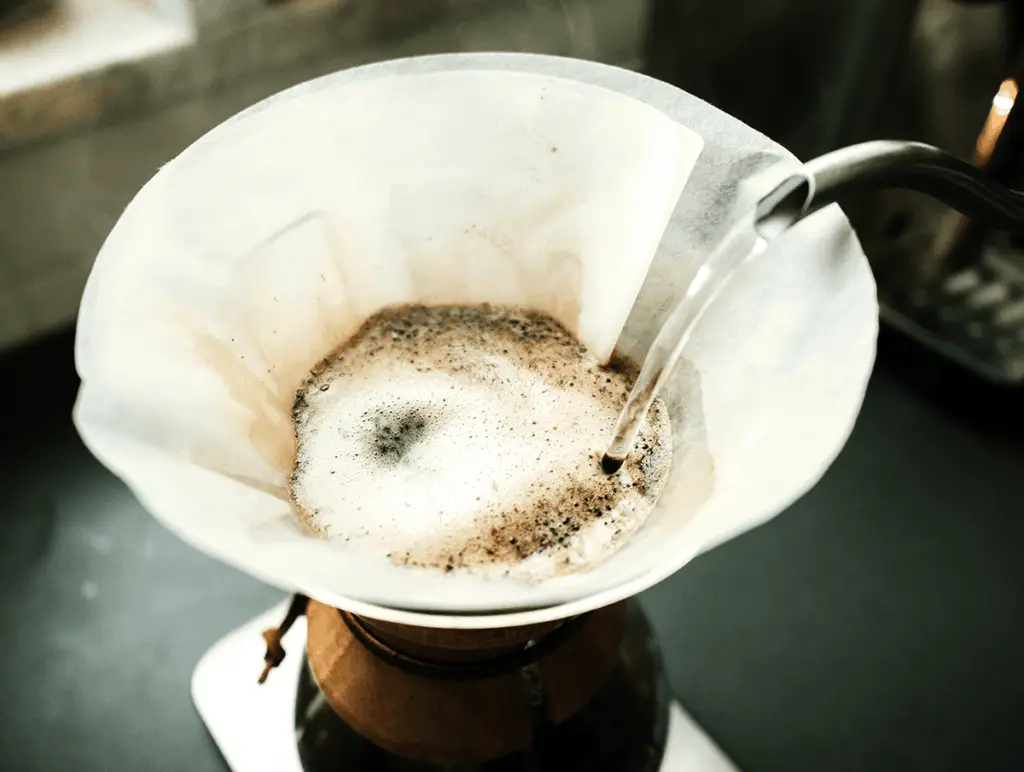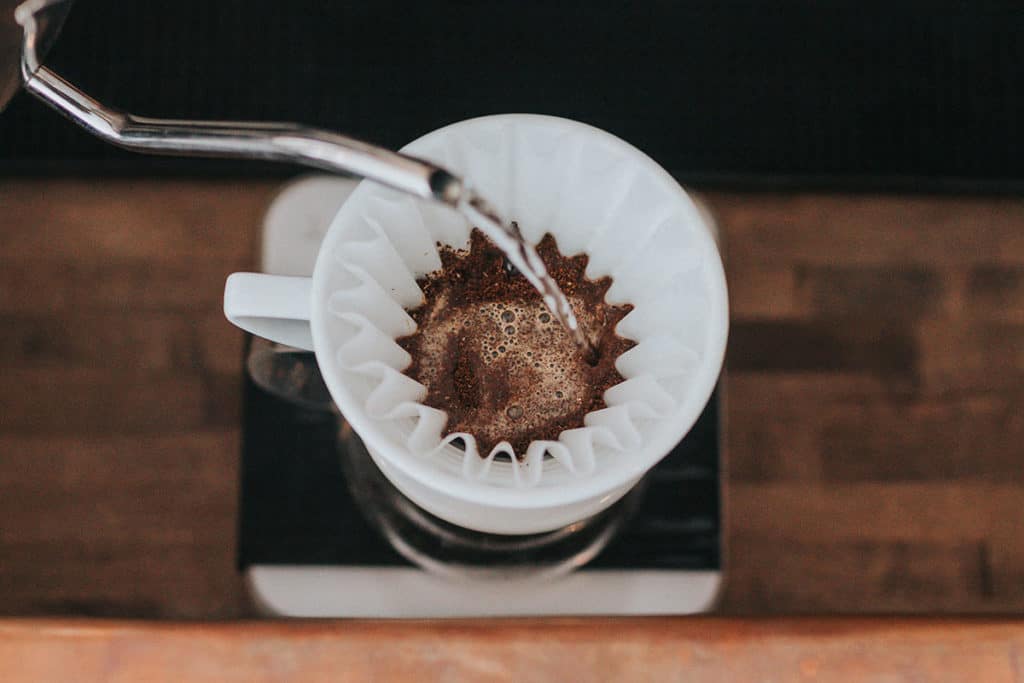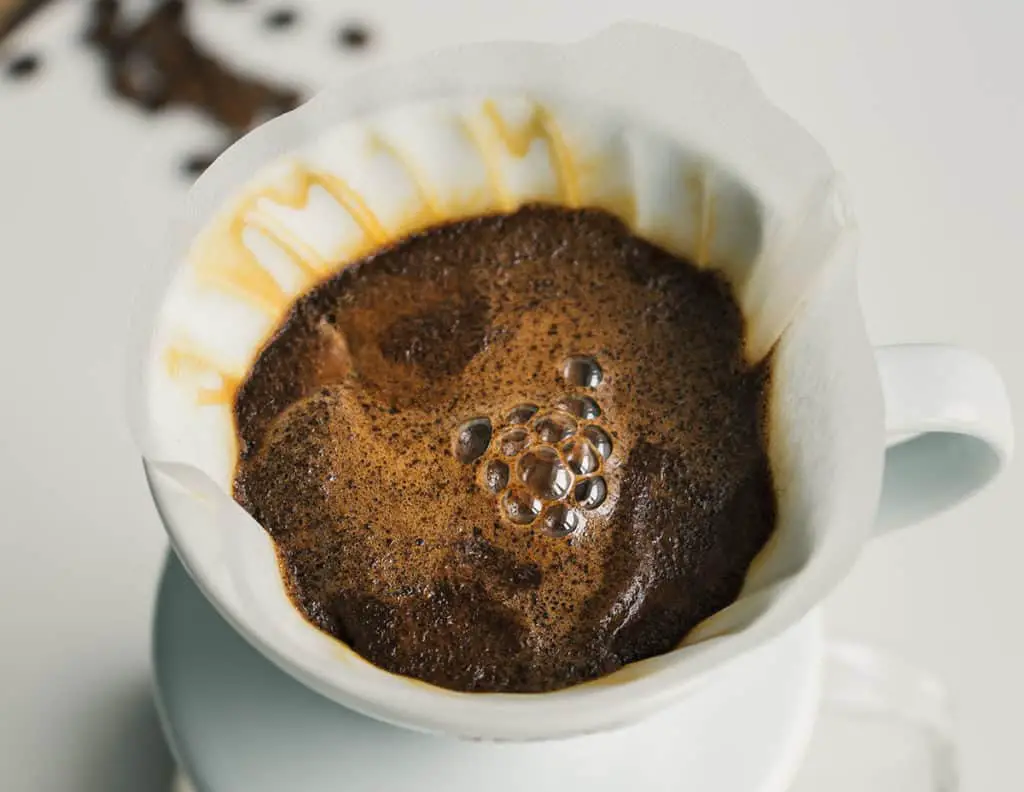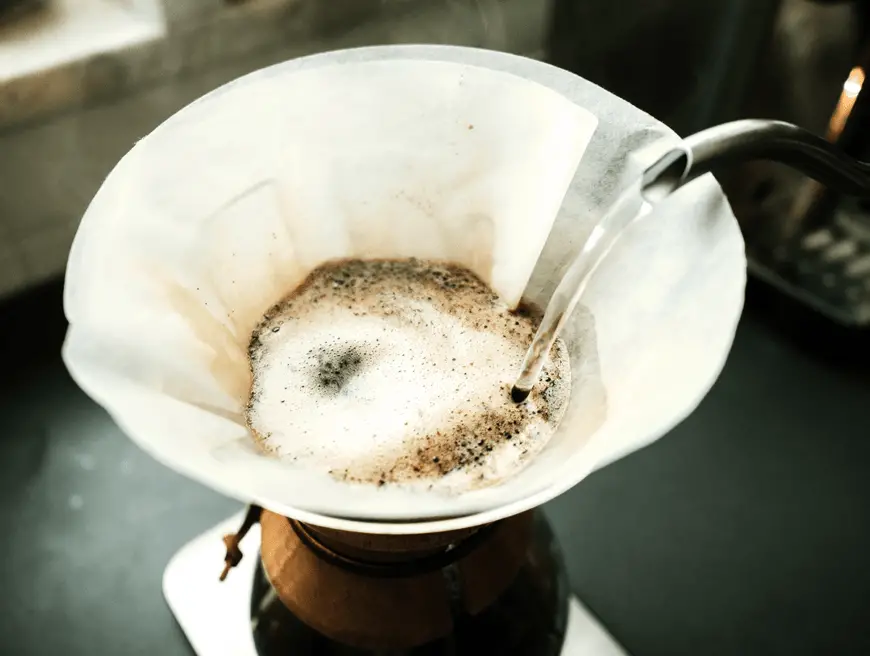
Coffee bloom refers to the initial expansion of coffee grounds when hot water is added during the brewing process. It is a crucial step in the preparation of a cup of coffee using freshly roasted coffee and can greatly impact the final taste and aroma.
In this post, we will explore what causes coffee bloom, the benefits of proper blooming, and how to achieve the perfect bloom. Whether you are a seasoned coffee drinker or just starting to explore the world of coffee, this post will provide you with valuable information on how to elevate your coffee game. So, let’s dive in and learn all about coffee bloom!
There is a lot to learn about the coffee bloom and I am really excited to discuss more about this topic in detail.
Why Does Coffee Bloom?
So why does coffee bloom when hot water is added? When hot water comes into contact with the coffee grounds, it causes the coffee to release trapped carbon dioxide gas. This gas is produced during the roasting process and can be trapped inside the coffee beans for several days or even weeks after roasting. The release of this gas causes the coffee grounds to expand and rise to the surface of the water, creating the characteristic “bloom” that gives this phenomenon its name.
But why is it important for coffee to release this trapped gas? The release of the carbon dioxide helps to evenly distribute the coffee grounds in the water, ensuring that all of the grounds come into contact with the water and are extracted evenly.
This leads to a more consistent flavor profile in the final cup of coffee, with no over-extracted or under-extracted flavors. Additionally, the bloom helps to degas the coffee and improve its flavor, as the trapped carbon dioxide can negatively impact the taste if left in the coffee grounds.
In short, coffee bloom is an important step in the coffee brewing process as it helps to evenly extract the flavor from the coffee grounds and improve the overall taste of the final cup. Proper blooming also ensures that the coffee grounds are properly wetted and the water is able to extract the maximum amount of flavor from the coffee.
Fresh Flavor Released

Think of it like this: most of the flavor of a compounds of a coffee bean are contained in the carbon dioxide gases, and more gas equals more flavor. And not only that, but more gas also typically means fresher beans.
When beans have been sitting around over time, that means more time has elapsed for the beans to naturally release gases, so older beans are going to produce less gas and therefore a weaker bloom.
As the once-trapped gases are released by the hot water at a rapid pace, when pressure is applied to the outside to repel the water being pulled in, flavorful and texture-rich compounds are naturally extracted because the water pressure turbulence caused by exposing the coffee grounds.
The Grind and Degree of the Roast Matters
Keeping the volatile compounds of roasted coffee intact immediately after roasting and before the carbon dioxide is depleted can allow the potential for vibrant and flavorful coffee. Using freshly roasted coffee, inside of the first week of roasting, provides the best opportunity for a terrific bloom experience.
And since grinding roasted coffee beans quickly deteriorates the gas and compound, yet also increases the coffee surface area to cause a quicker reduction of gas, it’s important to try to delay grinding the beans until just before brewing use to ensure a proper and ideal coffee bloom setting.
The science of the gas is pretty cool, and helps us understand how allowing more carbon dioxide to escape just before brewing can improve the resulting fresh coffee flavor.
It’s really a two-fold situation:
- First, carbon dioxide is actually sour to our taste, so when grounds don’t bloom (or release the gas) before a brew, the held gas infuses our coffee with a sour taste.
- Second, carbon dioxide acts to repel water and so inhibits with coffee bean compound extraction during the brewing process.
Since hot water spontaneously extracts oils that translate to flavors and aromatics in our coffee, if carbon dioxide hasn’t had a chance to escape, the intended extraction of our brew is greatly limited. With both factors at work when carbon dioxide remains, there is both a sour taste and a limited extraction. Get that carbon dioxide out just before you brew.
Let your grind breathe to help capture all the intended qualities, notes, flavors and aroma!
Coffee Bloom and Other Flavor Factors

Not only does timing of the roast and the grind matter for the coffee bloom, but so does packaging and storage of coffee beans.
While airtight containers help to hamper the gases from escaping the beans quite as fast as a non-airtight container, the other perspective is one of one-way pressure containers with release valves where gases can escape the beans but no gasses can enter the container, much like a vacuum. Both methods have their benefits.
Besides packaging and storing the coffee beans, there are other additional factors that may affect the coffee bloom, such as storage temperature, storage humidity, hardness of beans, level of roast, and even origin of beans.
Think hotter temperature of coffee bean storage equating to more releasing of gas, so watch your storage temperature to help your coffee bloom when the time comes.
Humidity levels that are dryer also cause more gases to escape but be careful that you don’t have high humidity conditions for your coffee bean storage as high humidity leads to growth of fungus and molds. Finding a balance between high and low humidity is your best bet.
You may or may not have control over knowing your bean hardness factor, but it is helpful to keep in mind that the harder the coffee bean the denser the mass the gasses have to work their way through. The origin of your coffee beans affects their regional releases of gas as well.
Now, roast level is a factor you have lots of control over and which will play a significant role on a coffee bloom. Heavy, darker roasts result in more affected and oily beans which means there is far less releasing of gas.
They’ve undergone a longer roasting method and so contain more carbon dioxide, and so as a general rule: darker roast beans have larger blooms than lighter roast beans.
The Coffee Bloom Science
We can keep it simple like this: more gas means more flavor and fresher coffee; more gas means a bigger bloom, and a bigger bloom means more flavor and fresher coffee.
So, let’s get to the actual practical matters of how-to coffee bloom. There are some widely accepted basic techniques of the coffee bloom, and a few subjective tips and methods you can select based on your preference and desire.
Basically, you want to be adding hot water – very hot but not boiling – to coffee grounds to dampen them for a minute or two, prior to starting the featured extraction.
Coffee Bloom Technique

Pour Over
For a coffee ground Pour Over Bloom, start by pouring, slowly and in a circular motion starting at the outer perimeter of the grounds and working inward, six to twelve teaspoons of very hot but not boiling water over the coffee grounds.
This process helps ensure the grounds are soaked evenly but aren’t drenched. Leave this alone for one minute, and then begin your regular process to complete your coffee extraction.
French Press
For a French Press Bloom, be sure to use a course grind of coffee bean grounds and slowly pour about three to six teaspoons of very hot but not boiling water over the coffee grounds. Foam on top of the water should start to form right away which is your bloom!
Allow the bloom to sit for 20 seconds and then stir it with a spoon to ensure the water has interacted with all the grounds in the bloom. Then begin your normal brew process of three to four minutes steeping.
For more information on brewing coffee with a French Press check out my post
Automatic Drip Coffee
For an Automatic Drip Coffee Maker Bloom, using a filter of good quality so that your brew will be both appropriately strong and properly flavorful, pour just enough hot but not boiling water to soak but not pour through the freshy roasted and ground coffee beans.
Let the grinds acclimate to the water soak for about one minute, give or take. Then begin your normal brew process. Because of the pre-soak, you’ll notice that the water stands on top of the grounds and then soaks through slowly, providing more extraction that results in better a better coffee result.
Experimenting Encouraged!
Experimenting with different roast levels and soak times will help you find what works best for your flavor palate. If your coffee isn’t blooming well, you may have over-roasted (or old and stale) beans as a first cause to explore as the explanation.
Final Thoughts
Make sense? It will when you witness your own coffee bloom. Once you experience the simplicity of producing your own coffee bloom, share your results with others so they too can enjoy coffee at its best potential.


